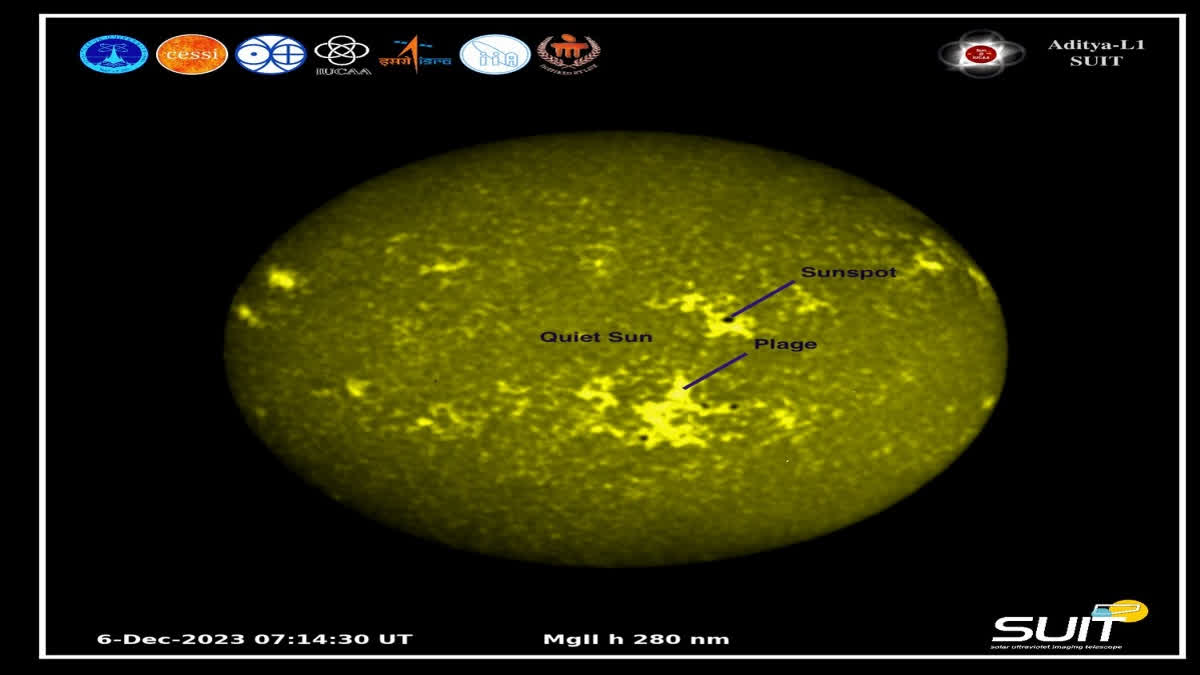Hyderabad:The Indian Space Research Organisation (ISRO) on Friday shared the first-ever full-disk images of the Sun that were captured by India's Aditya-L1 Mission. ISRO took to X (previously known as Twitter) and shared the Sun pictures--in near ultraviolent wavelengths ranging from 200 to 400 nm. "provide pioneering insights into the intricate details of the Sun's photosphere and chromosphere," ISRO posted on X.
"The Solar Ultraviolet Imaging Telescope (SUIT) instrument on board the Aditya-L1 spacecraft has successfully captured the first full-disk images of the Sun in the 200-400 nm wavelength range. SUIT captures images of the Sun's photosphere and chromosphere in this wavelength range using various scientific filters", said ISRO.
On November 20, 2023, the SUIT payload was powered on. Following a successful pre-commissioning phase, the telescope captured its first light science images on December 6, 2023. These unprecedented images, taken using 11 different filters (as shown in Table 1), include the first-ever full-disk representations of the Sun in wavelengths ranging from 200 to 400 nm, excluding Ca II h. The full disk images of the Sun in the Ca II h wavelength has been studied from other observatories.
